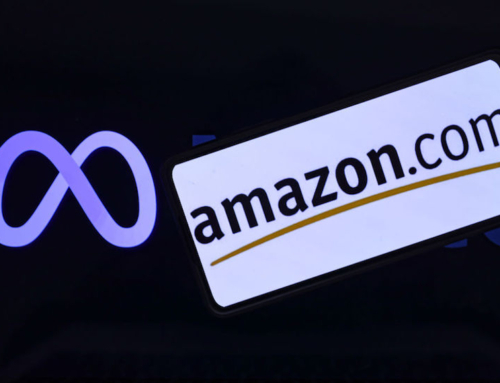Television has long been a dominant medium for advertising, but the landscape is evolving rapidly. The advent of Connected TV (CTV) is transforming how advertisers reach audiences, challenging the dominance of traditional TV. This article delves into the intricacies of Connected TV vs traditional TV advertising, explaining how each works, their respective metrics, and why Connected TV is becoming the preferred choice for advertisers.
Understanding Connected TV
Connected TV refers to any monitor used to stream video over the internet. Unlike traditional TV, which relies on broadcast, cable, or satellite transmission, Connected TV utilizes internet connectivity to deliver content. This can be through smart TVs with built-in internet capabilities, streaming devices like Roku, Apple TV, and Amazon Fire Stick, or gaming consoles like Xbox and PlayStation.
Connected TV allows viewers to access a wide range of content, including on-demand services, subscription-based platforms like Netflix and Hulu, and free ad-supported streaming channels. The versatility and accessibility of Connected TV have contributed to its growing popularity among consumers and advertisers alike.
How Connected TV Advertising Works
Connected TV advertising leverages Internet technology to deliver targeted ads to viewers. Advertisers can tailor their messages to specific demographics, interests, and individual viewing habits. This precision is made possible through advanced data collection and analysis techniques that track user behavior and preferences.
The process of CTV advertising typically involves:
- Audience Targeting: Using data from various sources, advertisers identify specific audience segments based on age, gender, location, and viewing history.
- Programmatic Buying: Advertisers purchase ad slots through automated platforms that use algorithms to match ads with the most relevant viewers in real-time.
- Ad Insertion: Once an ad slot is purchased, the advertisement is dynamically inserted into the streaming content, ensuring the right message reaches the right audience at the right time.
- Performance Tracking: Advertisers can monitor the performance of their campaigns through detailed analytics, measuring metrics such as view-through rates, engagement, and conversions.
Traditional TV Advertising: A Conventional Approach
Traditional TV advertising relies on broadcasting, cable, or satellite systems to deliver content to viewers. Advertisers purchase ad spots during specific programs or time slots to reach a broad audience. The primary components of traditional TV advertising include:
- Media Buying: Advertisers select channels and programs that align with their target audience, purchasing ad slots during commercial breaks.
- Creative Development: Advertisers create commercials designed to appeal to a broad audience, often focusing on brand awareness and mass appeal.
- Broadcasting: The ads are aired during the selected programs, reaching viewers who are tuned in at that time.
- Measurement: Traditional TV metrics primarily rely on ratings provided by services like Nielsen, which estimate the number of viewers based on sample data.
Connected TV vs Traditional TV Advertising Metrics
One of the most significant differences between Connected TV vs traditional TV advertising lies in their metrics. Measuring the effectiveness of advertising campaigns is crucial for advertisers looking to optimize their strategies and maximize ROI.
Connected TV Metrics
Thanks to its internet-based infrastructure, connected TV provides advertisers with detailed and actionable metrics. Some key CTV metrics include:
- Impressions: The number of times an ad is viewed.
- View-Through Rate (VTR): The percentage of viewers who watch the entire ad.
- Click-Through Rate (CTR): The percentage of viewers who click on an interactive element within the ad.
- Conversion Rate: The percentage of viewers who take a desired action, such as visiting a website or making a purchase, after viewing the ad.
- Audience Segmentation: Detailed information about viewers’ demographics, interests, and behavior.
- Real-Time Reporting: Instant access to performance data, allowing advertisers to make adjustments on the fly.
Traditional TV Metrics
Traditional TV metrics are more limited and less precise compared to Connected TV. The primary metrics used in conventional TV advertising include:
- Ratings: Estimates of the number of viewers based on sample data.
- Reach: The total number of unique viewers who watch a program during a specified period.
- Frequency: The number of times an ad is shown to the same viewer.
- Gross Rating Points (GRP): A measure of an ad campaign’s overall exposure calculated by multiplying reach by frequency.
Why Connected TV Is a Better Solution
Connected TV offers several advantages over traditional TV advertising, making it a more effective and efficient solution for modern advertisers.
Precision Targeting
One of the most significant benefits of Connected TV is its ability to deliver highly targeted ads. Unlike traditional TV, which casts a wide net, CTV allows advertisers to reach specific audience segments with tailored messages. This precision targeting ensures that ads are more relevant to viewers, increasing the likelihood of engagement and conversion.
Enhanced Engagement
Connected TV ads are often interactive, allowing viewers to engage with the content in ways that traditional TV cannot match. For example, viewers can click on ads to learn more about a product, visit a website, or purchase directly from their TV screen. This interactivity creates a more immersive and engaging experience, driving higher engagement rates.
Real-Time Analytics
The real-time nature of Connected TV metrics provides advertisers with immediate feedback on their campaigns. This allows for quick adjustments and optimization, ensuring ad budgets are used effectively. Traditional TV, on the other hand, relies on delayed and less precise data, making it harder to fine-tune campaigns on the fly.
Cost Efficiency
Connected TV advertising can be more cost-effective than traditional TV. Programmatic buying and precise targeting reduce wasted impressions, ensuring ad spend is focused on the most relevant audiences. Additionally, CTV’s flexibility allows advertisers to run campaigns of varying lengths and budgets, making them accessible to businesses of all sizes.
Measurable ROI
The detailed metrics provided by Connected TV enable advertisers to accurately measure their campaigns’ return on investment (ROI). This level of transparency and accountability is challenging to achieve with traditional TV, where the impact of ads can be harder to quantify.
Adaptability to Viewer Behavior
As viewer habits evolve, Connected TV is better positioned to adapt to these changes. The shift towards on-demand and streaming services reshapes how audiences consume content, and CTV is inherently aligned with this trend. With its rigid scheduling and limited interactivity, traditional TV struggles to keep pace with the changing landscape.
Connected TV vs Traditional TV Advertising
While traditional TV advertising has been a staple for decades, Connected TV offers a more modern, flexible, and effective solution for today’s advertisers. The ability to deliver targeted ads, engage viewers interactively, and measure real-time performance sets Connected TV apart as the superior choice.
FAQs
How does Connected TV deliver ads?
Connected TV delivers ads using internet connectivity to stream content, allowing for precise targeting and dynamic ad insertion based on viewer data.
What are the main differences between Connected TV vs traditional TV metrics?
Connected TV metrics include real-time data on impressions, view-through rates, click-through rates, and conversions, while traditional TV metrics rely on ratings, reach, and frequency estimates.
Why is Connected TV more cost-effective than traditional TV?
Connected TV’s precise targeting reduces wasted impressions, and its programmatic buying allows for flexible budgeting and campaign lengths, making it more cost-efficient.
How does audience targeting work in Connected TV advertising?
Advertisers use data from various sources to identify specific audience segments based on demographics, interests, and viewing habits, ensuring ads are highly relevant to viewers.
Can Connected TV ads be interactive?
Yes, Connected TV ads often include interactive elements allowing viewers to click for more information, visit websites, or purchase directly from their TV screens.
What is the primary advantage of real-time analytics in Connected TV advertising?
Real-time analytics provide immediate feedback on campaign performance, enabling advertisers to make quick adjustments and optimize their strategies for better results.
Final Thoughts On Connected TV vs Traditional TV Advertising
Connected TV represents a significant advancement in television advertising. Its ability to deliver targeted, interactive ads with measurable results makes it more effective and efficient than traditional TV. As viewer habits shift towards streaming and on-demand content, Connected TV is poised to become the dominant platform for advertisers looking to reach and engage modern audiences. By embracing Connected TV, advertisers can leverage its numerous benefits to create more impactful and cost-effective campaigns, ultimately driving better brand outcomes.










Leave A Comment